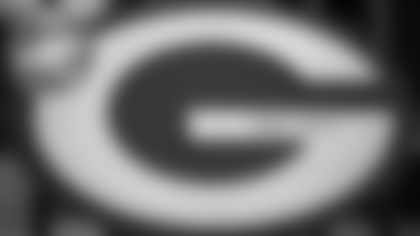Mike from Green Bay
I believe that Bob Harlan should be considered for the Pro Football Hall of Fame. His decision to hire Ron Wolf in late 1991 is still having a positive impact on the Packers. The current version of the Packers, 33 years later, is rooted in the Wolf legacy. Second, Harlan's incredible ability to shepherd through the referendum set the Packers up for long-term financial viability. Without that referendum it's feasible the Packers would not be in Green Bay. Lambeau Field would definitely NOT be a must-see destination for all NFL fans. I think his impact on the NFL is undervalued. Curious of your thoughts.
I agree: Harlan is certainly worthy of consideration as a contributor candidate when you compare his resume to owners who have been inducted. His decisions early in his tenure as Packers president set in motion the revival of the most storied franchise in the NFL when most people in the league didn't think that was possible.
Arguably, over the past 33 years there has been no better feel-good story in the league than the success of the Packers – with Lambeau Field emerging, at least in one recent survey, as the No. 1 bucket list item among football venues for America's sports fans.
Harlan was elected president and CEO on June 5, 1989. Twenty-four months earlier, Frank Deford, who had been voted by his peers national sportswriter of the year five straight times from 1984-88, penned a story for Sports Illustrated titled, "Troubled Times in Titletown."
Deford wrote: "… there is little argument that a lot of players don't want to spend their salad days in a one-horse town. This is especially true of Black players, who bemoan the lack of a normal social life." Deford's solution: "The answer to Green Bay's dilemma is simple. It should sell the franchise to Milwaukee for $60 million or whatever …"
That was the mess Harlan inherited.
Fast forward to today and since 1992, the Packers have the best regular-season record in the NFL, along with the most winning seasons and playoff appearances. Topping it all off are two Super Bowl titles.
Harlan was president for 16 years of that run. Mark Murphy has been president for the past 17 years.
To be frank, I was stunned last year when Lee Remmel was voted one of 25 finalists in the contributor category for induction into the Pro Football Hall of Fame. What's more, the hall in its brief summaries of the finalists' credentials included Remmel's 29 years of work with the Green Bay Press-Gazette.
As background, those years were included in Remmel's resume when he was inducted into the Green Bay Packers Hall of Fame in 1996. I wasn't on the selection committee at the time, but presumably that was done because George Whitney Calhoun's and Art Daley's years with the Press-Gazette were included when they were inducted in 1978 and 1993, respectively.
But Calhoun spent 45 years at the paper working as a city editor, sports editor and telegraph editor while doubling as the Packers' publicist, secretary and board member. He also was cofounder of the Packers, along with Curly Lambeau.
As sports editor of the Press-Gazette, Daley covered the Packers on an almost daily basis for 21 years and wrote about them in other capacities for almost 70 years.
Remmel, on the other hand, spent the first two of his almost 30 years at the Press-Gazette as a city reporter before moving to sports. Then from 1946 to 1966, or another 21 years, his main beats were high school sports; bowling, which included writing a column titled, "The Spare Corner;" and starting in 1958, the Green Bay Bobcats, the city's semipro hockey team.
As the No. 2 guy to Daley on what was a two-man sports staff for most of those years, Remmel served as the jack-of-all-trades, covering everything from "lowly marbles tournaments" to the Packers, as the Press-Gazette noted in 1963.
But Remmel's coverage of the Packers was limited until his last seven years at the paper. For example, from what I can determine, he didn't write his first Packers' game story until 1967.
From 1946-57, he wrote locker-room sidebars for home games, which never totaled more than six in a season, and occasionally pinch-hit for Daley on offseason stories. In 1958, Remmel also wrote sidebars for Packers away games at Chicago and Detroit.
Once the Packers started winning under Vince Lombardi, Remmel traveled to an increasing number of away games to write sidebars as Daley's backup. In 1964, Remmel also started writing a semiweekly sports column titled "Personality Parade." He'd frequently profile Packers players and coaches, but probably just as often, or maybe even more often, those columns were about people involved in other sports endeavors.
Even in 1966, the season in which the Packers won their first Super Bowl, Remmel didn't go on the road to write sidebars for all of the games.
The intent here is not to diminish Remmel's long and distinguished career. He was a mind-blowing wordsmith and arguably the most engaging storyteller of Packers history – anytime, anywhere he spoke on God's green and gold earth.
From my start as one of Lee's young colleagues at the Press-Gazette to his 30 years of work in the Packers' public relations department to his later years in retirement, Lee willingly shared with me his storehouse of stories, and I'll forever appreciate that.
I was asked to deliver the eulogy at Lee's funeral. It was an honor.
All I'm trying to do here is set the record straight regarding his credentials as a contributor candidate for the Pro Football Hall of Fame. For an honor of that importance, one would expect the process to at least include an accurate bio.
Harlan was hired by the Packers in 1971 as an administrator and retired in 2008 after serving 18 years as president and roughly 37 in all. Remmel's time with the Packers all but paralleled Harlan's. Remmel was hired as publicity director in 1974 and served in a secondary role to director of public relations Chuck Lane from 1975-79. Remmel subsequently replaced Lane as PR director and then ended his career as Packers team historian from 2004-07.
As I see it, as contributor candidates, the only edge Remmel would have over Harlan is longevity – but only if the Pro Football Hall of Fame counted his 23 years where he wrote far more stories about high school sports, bowling and hockey than he did the Packers.
Lee's colorful stories, memory of even the most incidental details and regaling wit certainly made the Packers a lot of friends in the media and wherever.
But Harlan oversaw one of the most remarkable resurrections in NFL history following 24 years of futility that included one division title, one playoff win, five winning seasons; the aging of Lambeau Field and no-show counts that nearly reached 10,000; and an offense so pathetic in 1986 that its longest touchdown play in five Lambeau Field losses was a 6-yard pass.
The entire NFL world appears awestruck over Detroit's recent reclamation and rightfully so. But let's compare.
What the Lions' current regime inherited was a team that had gone 11-5, 7-9, 9-7 and 9-7 with two playoff appearances under Jim Caldwell from 2014-17. Plus, in 2011, the Lions were 10-6 and made the playoffs under Jim Schwartz.
That adds up to three playoff appearances in six years from 2011-16. That's one more than the Packers had in 24 seasons preceding Harlan's election as president.
Those now in charge in Detroit will be entering their fifth season with still no NFL title in 67 years. The Packers won the Super Bowl in Harlan's eighth season as president and fifth after his housecleaning and the hiring of Ron Wolf as general manager.
So we shall see on that count, how soon the Lions win a Super Bowl.
Dan from De Pere, WI
You've written that Andrew Turnbull and George Calhoun were on the Pro Football Hall of Fame's original list of contributor candidates. Would you spell out their qualifications for that honor?
Calhoun filled some of the same roles as Remmel by working for both the Press-Gazette and the Packers, except that Calhoun worked for both at the same time.
As you noted, he was listed as a contributor candidate before the hall's charter class was elected in 1963. He and Turnbull were two of 16. Actually, Lambeau was a third candidate in that category to have been associated with the Packers.
Here again, in the bigger picture, I don't see where Remmel's contribution to pro football or even the Packers comes close to matching Calhoun's.
Calhoun, along with being a cofounder of the Packers in 1919, played a significant role in their survival as the only small-town team to last beyond 1933 and which today, after 105 seasons, ranks as the NFL's most successful franchise in both number of championships and victories.
"There wouldn't have been a Packer team without George Whitney Calhoun," Fritz Gavin, one of the original Packers, said in 1951. "He was the prime mover."
Calhoun was a part owner of the Packers in 1922, their publicist from 1919-47, their corporate secretary from 1922-33 and '35-41, and a member of their board of directors from 1922-33 and again from 1941-63. In the years in between, when he wasn't on the board, he was the secretary of the executive committee.
One of his more important contributions was writing the Packers' publicity booklet – today's version of a media guide – starting in 1930.
Calhoun also covered the Packers for the Press-Gazette off and on from 1919 until the mid-1930s, while serving in his different capacities at the paper. Following his retirement in 1957, Calhoun continued writing a column about Packers history for the Press-Gazette until shortly before his death in 1963.
Beyond that, Calhoun also recorded the early history of the NFL perhaps better than anyone, keeping records and statistics that made it possible for the league to publish its first official encyclopedia in 1952; planted the seed for the NFL's first official all-pro team; and even served as a de facto publicist for the league.
David Neft, who as editor for three different pro football encyclopedias and peerless as a researcher of biographies and statistics especially during the NFL's pre-stats era, has said that no paper covered pro football better than the Press-Gazette in those early years, although the Rock Island Argus and one or two of the Ohio papers might have been on par with it.
In January 1952, NFL Commissioner Bert Bell and league owners invited Roger Treat to attend their annual meeting and endorsed his work as editor of the first official NFL encyclopedia. It was published later that year, and Calhoun was the first name Treat thanked in his preface.
Treat wrote that his encyclopedia never could have been completed "without monumental help from many sources," and mentioned Calhoun first for having "forwarded his precious, and massive, files" that were indispensable to the project.
Starting in 1923, Calhoun was the first to name an all-NFL team by polling league sources, and he did it for 12 of the next 13 years.
The first year Calhoun received votes from 15 sportswriters in 12 different NFL cities. By 1926, a total of 17 sports editors and team managers from every NFL city voted. In 1929, an unspecified number of league owners were among Calhoun's 16 voters in addition to coaches, writers and officials.
By 1931, Calhoun's team had evolved into the Official NFL All-Pro team. The league's picks for the first through third teams were exactly the same as his.
Calhoun also wrote a weekly pro football notes column for years that he mailed to hundreds of newspapers around the country. Whether the columns were published verbatim or excerpted, they helped promote a league starving for attention. For example, in the early years of the NFL, it wasn't unusual for game stories in big-city papers to be no longer than a handful of paragraphs and buried in the back pages.
When Calhoun wrote a letter to Bell in August 1954, informing him that he was discontinuing his Football News Bulletin, the commissioner wrote back on league stationery, "I want you to know that for myself and the members of the National Football League we deeply appreciate everything you have done for us; and this is from the hearts of all of us."
David Yuenger, who covered the Packers when Daley was in the service during World War II and later served as editor of the Press-Gazette from 1966-78, once wrote that Calhoun's work for the Packers was voluntary. While I've never found anything in the Packers' financial records to show that Calhoun was paid for his services, I suspect that Turnbull allowed Calhoun to do much of his Packers' work on the newspaper's time clock.
Turnbull, as one of the original owners of the Press-Gazette, was the driving force behind the Packers becoming a community property in 1923. He spearheaded the first stock sale and became the team's first president.
Why was Turnbull one of the contributors on the Pro Football Hall of Fame's original ballot? The answer can be found in the league's meeting minutes.
John Eisenberg's book, "The League: How Five Rivals Created the NFL and Launched a Sports Empire," focused on Bert Bell, George Halas, Tim Mara, George Preston Marshall and Art Rooney. And overall, they probably played larger roles in the league's history than any one of the Packers' presidents.
But, a review of the minutes through the 1920s, suggests Turnbull might have wielded more influence on business matters than any other club representative and was one of league president Joe Carr's closest confidants.
Halas was part of the league in its maiden season, 1920, but was only a part-owner of the Bears until 1931. Tim Mara's New York Giants joined the NFL in 1925. Marshall, Bell and Rooney weren't granted franchises until 1932 and '33.
By starting at the bottom of the newspaper business in 1899, earning a mere $3 a week, and rising to become an owner of the Press-Gazette by 1915, Turnbull brought something to the NFL table that most others didn't in those early years.
The acumen of a self-made businessman with maybe the fattest wallet in the room.
Ralph Hay, who called and hosted the first meeting of what became the American Professional Football Association, owned a car dealership in Canton, Ohio. Dr. Alva A. Young, manager of the Hammond Pros, was a physician. Arthur Ranney, one of Akron's representatives, was a real estate agent. But they were all out of the league by the mid-1920s.
Among the others, based on occupations listed in the 1920 U.S. Census or in other biographical sources, there were ballplayers, a cigar store owner, shoe salesman, lumber salesman, painter, clerical worker and recreational manager. Carr, who became league president in 1921, was a machinist for a railroad and a sportswriter as a young adult.
Within just months of becoming president of the Packers, Turnbull was given a significant committee assignment by Carr.
In January 1924, when league membership still numbered 20, Turnbull was appointed to a five-man committee to study the feasibility of realigning the league for scheduling purposes. Two years later, when there was a motion to again consider dividing the league into divisions, Turnbull was one of three members to represent the western-most teams.
In February 1926, Turnbull was appointed chairman of a seven-man committee to redraft the league's constitution and bylaws. He subsequently delivered the committee's report to the full body of representatives.
At a February 1927 meeting in New York, as the league began the process of cutting its membership from 22 teams to what turned out to be 12, Turnbull was chosen by Carr, among a pool of more than 30 possible delegates, to sit on a nine-man committee to find a solution to what was described in the minutes as the NFL's "unwieldy" composition.
At that initial meeting, it was proposed to split the league into two divisions: Class A and Class B. Green Bay was the only city with a population of less than 100,000 to be included and, at the same time, be guaranteed home games, among the 14 teams designated for Class A. Duluth, Minn., with a population hovering around 100,000, and Pottsville, which was even smaller than Green Bay, also were included but strictly as traveling teams. In fact, Duluth was counted in only if it could guarantee that Ernie Nevers would be in its lineup.
On the other hand, of the 10 cities assigned to Class B, six were original APFA members from 1920: Akron, Canton, Columbus, Dayton, Hammond and Rochester, N.Y.
Prior to the next meeting, held in Cleveland in late April, Turnbull, knowing a steep increase in the league's guarantee fund was on the docket, summoned Packers board members and other local businessmen to a meeting at the Press-Gazette. There, he got commitments from those in attendance to contribute the money necessary for Green Bay to retain its franchise.
Only 13 teams sent representatives to that meeting, where the guarantee fund was increased from $1,500 to $2,500. The motion to do so was made by Halas, seconded by Turnbull and carried unanimously.
The third and final meeting was held in Green Bay in mid-July. Early on the first day, the roll of clubs was called and 11 representatives stepped forward and deposited their $2,500. Eleven withdrew, including Carr's Columbus franchise, and Akron. Canton, the cradle of pro football, was a no-show.
If not for Turnbull's leadership and probably some arm-twisting during that time, there'd be no Green Bay Packers in today's NFL. In February 1928, at the next league meeting, Carr picked Turnbull to join him on the league's five-man executive committee.
Turnbull stepped down as Packers president at that point but remained on the league's executive committee for a time and occasionally attended league meetings as late as 1939.
In 1930, Dr. W.W. Kelly, who had served as Packers president the previous year, was elected to the league's executive committee and served until at least 1933. In 1935, Lee Joannes, who succeeded Kelly as Packers president in 1930, became the third Packers president to serve on the NFL's executive committee.
Along with Lambeau, all three of those men, were prominent voices in league matters based on meeting minutes, which are available at the Ralph Wilson, Jr. Pro Football Research and Preservation Center at the Hall of Fame in Canton.
In summary, the purpose here over the past two weeks wasn't to pitch for any particular contributor candidate over any others among former Packers officials. Having sat on the selection committee for 13 years, there are going to be limits with every team, and the Packers have a number of worthy candidates from Verne Lewellen as a senior candidate to Mike Holmgren as a coach.
But, hopefully, from here forward, the bios of Packers contributor candidates will at least accurately reflect their contribution to the NFL. Ditto for former Packer players who fall into the senior category, as far as their positions and roles in Lambeau's Notre Dame system.














